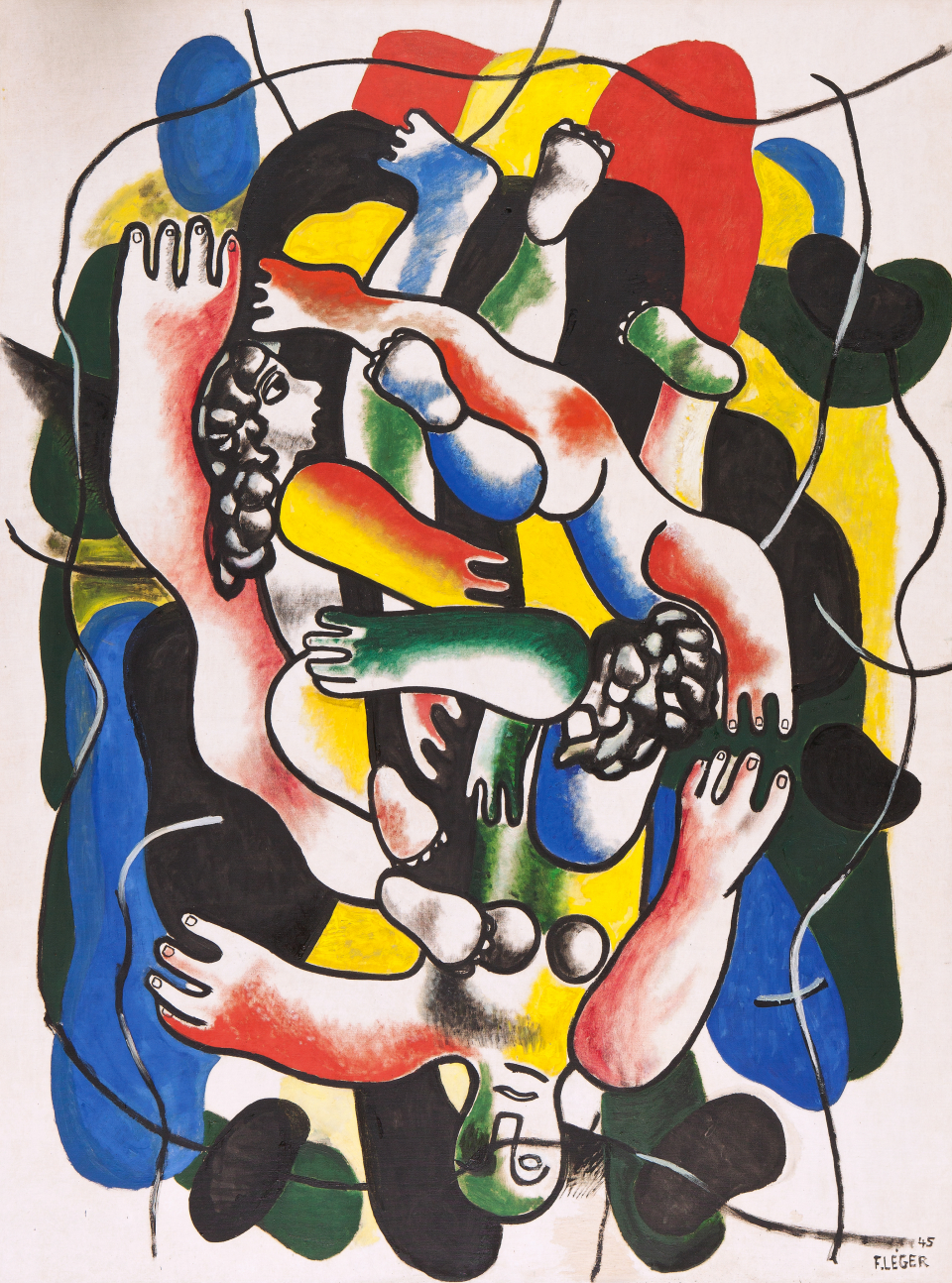
Fernand Léger
(1881-1955)
Fernand Léger
(1881-1955)Les plongeurs
Intro
At the outbreak of World War II Fernand Léger fled from France to the USA, settling in New York City, where he discovered a new range of topics for his painting. While his early Cubist works were dominated by abstract depictions of machines, Léger now seized on motifs of movement in multipart series: cyclists, dancers, and divers. In his New York works he continued to strive for a balance of line, color, and form.
In »The Divers« he shows us, viewed from above, a chaotic tangle of schematic bodies, curved areas of color, and undulating black lines. Physicality is implied through gentle color gradients, yet it is difficult to see where one body ends and another begins. Léger is fascinated by the apparent disorder of the swimmers, transforming them into a playful organicism in which color and form are liberated from natural models in order to develop their own delightful rhythm.
Background
In the port of Marseille in 1940, Fernand Léger made an observation, which would inspire a whole series of paintings and sketches. Immediately before embarking on his journey into exile in America, the gaze of the French painter and sculptor fell on some shipyard workers, who were splashing around in the Mediterranean Sea to cool off on a hot summer’s day. The artist was so fascinated by the light, flowing movements of their bodies in the water that, shortly afterwards, he began working on the translation of these impressions into painting.
Léger continued to vary the subject of the group of bathers through 1945, when he completed his series of »The Divers«. The painting owned by the Kunsthalle Mannheim, created in 1945, is the final version of these images of divers, all of which were created in the United States. As in the other representations of this subject, it is quite difficult at first for viewers to find their bearings. It seems as if a wildly swirling vortex has wrought havoc not only with the powerful body parts of the dense throng of divers. It is also almost impossible to make out where top and bottom lie in this portrait-format painting. The impression of a lack of direction and weightlessness is a result not only of the overlapping of the stencil-like figures of the swimmers, outlined in black. The large areas of pure colour and the resultant contrasts also contribute to the impression of movement surrounding the human bodies. As if attracted to the black areas of the background by an invisible force, the divers circle around the centre of the picture. Released from any sense of gravity, they seem, at the same time, like birds flying through the air. Freed from all ballast, these merry divers appear like a symbol of the liberation of mankind from earthly constraints.
In addition to the series of »The Divers«, Léger repeatedly focused his attention in other series, from the 1930s until his death in 1955, on the world of sports and the related subject of the circus. Whereas, before that time, his depictions of the modern world of work had been dominated by human machines displaying Cubist influences, during the last decades of his artistic career, his optimistic depictions of leisure pursuits and sporting activities were populated above all by acrobats and cyclists. In these works, as in the pictures of divers, the French artist also arrived at a formal language, which brought together many developments within his artistic career to create something new and inimitable. Ideas inspired by Cubist and Futurist artists are combined here with exuberant colour schemes and strongly accented contours.
Like Léger’s early works, these pictures can also be seen as assemblages of individual forms, in which the sense of space is created by the layering and overlapping of flat surfaces. From the 1950s onwards, later generations of artists were enthralled by Léger’s late paintings, some of which reached monumental dimensions. These merry pictures were also used in the form of mosaics to decorate the façades of entire buildings. Above all, thanks to their brilliance and their stylised forms, they also served as sources of inspiration for various Pop artists.
On loan from the State of Baden-Württemberg since 1963
Kunsthalle Mannheim / Cem Yücetas
)